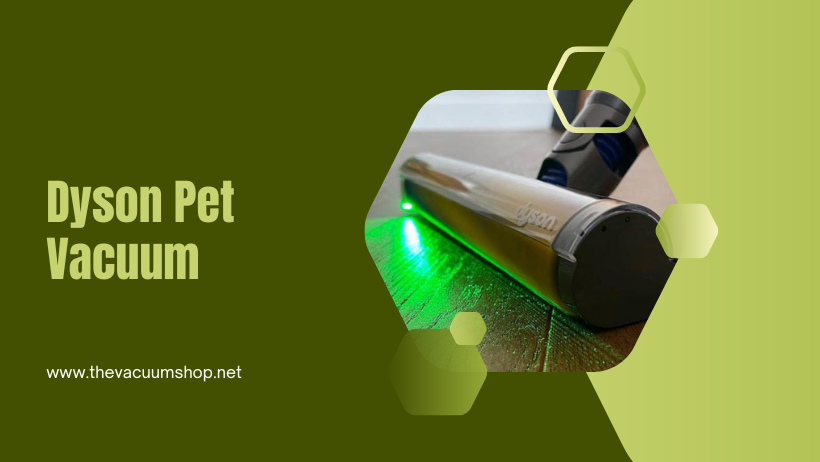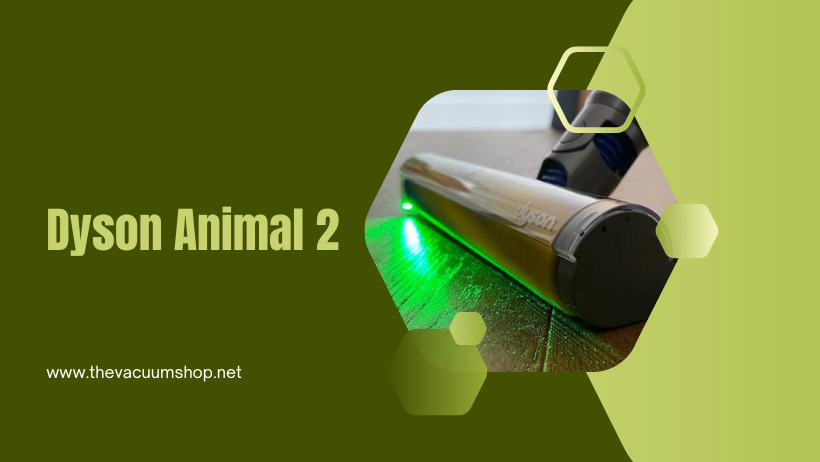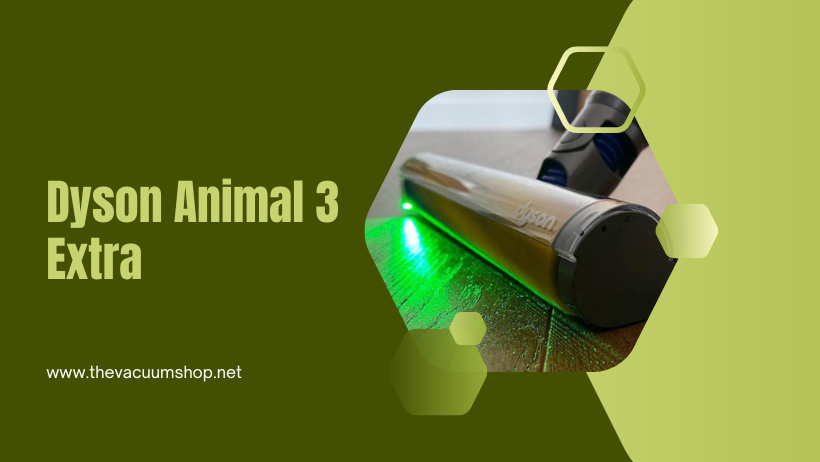Features
Dyson pet vacuums are known for their powerful suction, which effectively removes deeply embedded pet hair from various surfaces like carpets, upholstery, and hard floors. They come equipped with specialized pet tools, including turbine heads, crevice tools, and mini motorized heads, designed to tackle pet hair on furniture, stairs, and hard-to-reach areas.
The hygienic emptying system simplifies the process of emptying the dustbin. With a push-button release mechanism, it minimizes contact with dust and allergens. The HEPA filtration system ensures a cleaner indoor environment by trapping 99.97% of particles as small as 0.3 microns, including pet dander, pollen, and dust mites.
Dyson pet vacuums prioritize ease of use and maneuverability. They are lightweight and designed to navigate around furniture and tight spaces. Cordless models offer freedom of movement and convenient cleaning without the hassle of cords. Multiple power settings provide customizable cleaning options based on the surface type and dirt level.
Performance
Dyson vacuums are renowned for their exceptional pet hair removal capabilities. Their powerful suction and specialized brush heads effectively remove hair from carpets, upholstery, and hard floors.
In terms of carpet cleaning, Dyson vacuums perform excellently, efficiently removing dirt, dust, and allergens. Some models even offer specialized brush heads for deeper cleaning.
While not as specialized as some other brands for hard floor cleaning, Dyson vacuums can still effectively clean these surfaces. Certain models feature specialized brush heads for hard floors, further enhancing their performance.
Dyson vacuums excel at removing dust, thanks to their powerful suction and filtration systems. They are also highly effective at removing allergens like pollen, dust mites, and pet dander, thanks to their HEPA filtration systems.
Dyson vacuums are typically lightweight and easy to maneuver around furniture and tight spaces, making them convenient to use.
While generally louder than some other brands, newer Dyson models have reduced noise levels.
Most Dyson vacuums are easy to assemble, use, and empty, making them user-friendly. They do require regular maintenance, such as emptying the dustbin and cleaning the filters.
What We Like
Dyson pet vacuums are highly praised for their powerful suction, which is attributed to Dyson's patented cyclone technology. This strong suction effectively removes pet hair, dander, and debris from carpets, upholstery, and hard floors.
The inclusion of specialized pet tools, such as the mini-motorised head and crevice tool, enhances the vacuum's ability to remove pet hair from tight spaces and furniture.
Despite the powerful suction, Dyson pet vacuums are designed to be lightweight and maneuverable, allowing for effortless cleaning around and under furniture.
The hygienic design of these vacuums, featuring a sealed system and HEPA filtration, traps 99.97% of dust, allergens, and pet dander, contributing to a cleaner indoor environment.
Emptying the dustbin is a breeze with a single click, minimizing contact with allergens and dust. The long cord length provides ample reach for cleaning large areas without the need for frequent plugging and unplugging.
While not completely silent, Dyson pet vacuums operate relatively quietly compared to other models, making them more comfortable to use in homes.
The versatility of these vacuums is evident in the multiple attachments offered by many models, making them suitable for cleaning a variety of surfaces, including carpets, upholstery, furniture, and hard floors.
Dyson vacuums are known for their robust construction and long lifespan, making them a worthwhile investment. The brand's strong reputation for quality and innovation further contributes to customer peace of mind.
What We Don't Like
While Dyson pet vacuums are popular for their powerful suction and impressive features, they are not without their drawbacks. One of the most common complaints is the high price. Dyson vacuums, particularly the pet models, are generally more expensive than other brands.
Another common issue is the weight and size of Dyson vacuums. Many find them bulky and heavy, especially the corded models. This can make maneuvering the vacuum around tight spaces or upstairs challenging.
The cord length on corded models is often cited as another inconvenience. The short cord can limit reach, making it difficult to clean all areas of a room without constant unplugging and replugging.
Some customers also find the attachments difficult to use or store. The variety and design of attachments can be overwhelming, and they can take up valuable space.
Maintenance is another factor to consider. Dyson vacuums require regular cleaning, including emptying the dustbin and cleaning the filters. This can be time-consuming and inconvenient.
Noise is a common complaint, with some Dyson models being quite loud. While the powerful suction is desirable, the accompanying noise can be disruptive, especially in a quiet home environment.
While known for their pet hair removal capabilities, some customers report that Dyson vacuums don't always remove all pet hair, particularly deeply embedded hair.
Despite the HEPA filtration, some allergy sufferers find that Dyson vacuums don't provide sufficient relief from allergens.
Finally, the limited warranty on Dyson vacuums is a concern for some, as it is shorter compared to other brands.
The noisy attachments, particularly the turbo brush, are also a common source of frustration for some users.
Cleaning Tasks
Dyson pet vacuums are highly suitable for removing pet hair from carpets and rugs. Their powerful suction and specialized tools, such as tangle-free turbine heads and mini-motorheads, effectively remove deeply embedded pet hair.
These vacuums are also suitable for cleaning upholstery, furniture, and curtains. Their lightweight design and various attachments, including crevice tools and upholstery tools, make it convenient to clean soft surfaces and remove embedded pet hair.
Dyson pet vacuums are suitable for cleaning hard floors as well. Some models come with specialized floorheads designed for hard floors, offering a smooth and efficient cleaning experience.
These vacuums are highly suitable for cleaning pet beds, efficiently tackling the heavy pet hair and dander found in these areas.
The lightweight design and versatile attachments, such as crevice tools and extension wands, allow for easy cleaning of stairs and hard-to-reach areas, making them suitable for this task.
Dyson pet vacuums are suitable for cleaning up pet messes, with their strong suction and specialized tools effectively removing pet accidents and spills.
Their versatility of attachments and powerful suction make them effective for cleaning pet hair from car seats, carpets, and other surfaces, making them suitable for cleaning pet hair from car interiors.
Some Dyson models offer a specialized "turbine tool" designed for removing pet hair from clothes and bedding, making them suitable for this task.
Some Dyson models have HEPA filtration systems that effectively remove dust mites, pet allergens, and other microscopic particles from the air, making them suitable for removing dust mites and allergens.
Finally, Dyson pet vacuums are suitable for cleaning pet food crumbs and debris. Their powerful suction and specialized tools easily remove crumbs and debris from floors, carpets, and other surfaces.
Comparison to Other Brands
| Feature | Dyson Animal Upright | Shark Vertex UltraLight | Bissell Pet Hair Eraser Turbo | Hoover WindTunnel Pet | Best for |
|---|---|---|---|---|---|
| Price | $599 | $449 | $299 | $249 | Budget |
| Weight | 17.5 lbs | 13.4 lbs | 15.4 lbs | 16.5 lbs | Lightweight |
| Suction Power | Powerful | Powerful | Strong | Good | Powerful suction |
| Brush Roll | Anti-tangle brush roll | Self-cleaning brush roll | Anti-tangle brush roll | Anti-tangle brush roll | Anti-tangle brush |
| Attachments | Crevice tool, dusting brush, upholstery tool | Crevice tool, dusting brush, upholstery tool, pet hair tool | Crevice tool, dusting brush, upholstery tool, pet hair tool | Crevice tool, dusting brush, upholstery tool | Variety of tools |
| Features | Ball design for maneuverability, HEPA filtration | Lightweight design, powerful suction, self-cleaning brush roll | Lightweight design, powerful suction, anti-tangle brush roll | Powerful suction, anti-tangle brush roll, HEPA filtration | Specific needs |
| Pros | Powerful suction, excellent maneuverability, HEPA filtration | Lightweight, powerful suction, self-cleaning brush roll | Affordable, powerful suction, anti-tangle brush roll | Good suction, affordable, anti-tangle brush roll | |
| Cons | Expensive, heavy | Can be less powerful than Dyson | Lower-end HEPA filtration | Less powerful suction than Dyson and Shark |
The Dyson Animal Upright is the most expensive vacuum cleaner on this list at $599. It boasts powerful suction, excellent maneuverability thanks to its ball design, and HEPA filtration. However, it is also the heaviest vacuum on the list at 17.5 lbs.
The Shark Vertex UltraLight is a good option for those seeking a lightweight vacuum with powerful suction at a slightly lower price point of $449. It features a self-cleaning brush roll that helps prevent hair tangles.
For a more budget-friendly choice, the Bissell Pet Hair Eraser Turbo is a solid option at $299. It's lightweight, has powerful suction, and features an anti-tangle brush roll.
The Hoover WindTunnel Pet is the most affordable option at $249. It offers good suction power, an anti-tangle brush roll, and HEPA filtration. However, it is not as powerful as the Dyson or Shark models.
Each of these vacuum cleaners comes with a set of attachments including a crevice tool, dusting brush, and upholstery tool. The Shark and Bissell vacuums also include a pet hair tool for tackling stubborn pet hair.
Maintenance
To keep your Dyson Pet vacuum running smoothly, regular maintenance is essential. After every use, empty the dustbin by pressing the release button. Rinse the dustbin and filter with water and allow them to dry completely before reassembling.
Depending on your specific model, the filter may need to be washed every 3-6 months. Consult your Dyson manual for instructions. Rinse the filter with water and allow it to dry completely before reinstalling.
Remove any hair or debris wrapped around the brush bar. Use the included brush tool to remove tangled hair or debris. You may also need to remove the brush bar and clean it more thoroughly.
Inspect the cyclone for any blockages. Clean the cyclone using a soft brush or vacuum cleaner attachment.
Apply a small amount of silicon-based lubricant to the telescopic wand extension points.
Run a soft cloth or brush through the hose to remove any debris.
Remove the power head from the vacuum and remove any debris or hair. Clean the power head with a damp cloth.
Examine the power cord for any signs of damage or wear. Replace the cord if necessary.
Replace any worn or damaged parts, such as the brush bar, filters, or cyclone.
Finally, follow the Dyson user manual for recommended cleaning and maintenance schedules.
Troubleshooting
Vacuum won't turn on: Begin by checking if the power cord is securely plugged into both the outlet and the vacuum. Test with a different outlet if necessary. Ensure the power button is switched on. If your model has a battery, check if it's fully charged. Lastly, inspect if there's a replaceable fuse and if it's blown.
Weak suction: A full dustbin can restrict airflow and reduce suction, so empty it first. Check for any blockages in the hose, attachments, and brush bar. Dirty filters can also restrict airflow, so clean them according to your user manual's instructions. Finally, ensure the brush bar is spinning freely and not tangled with hair or debris.
Noise issues: Inspect for blockages in the hose, attachments, and brush bar. Ensure the brush bar is spinning freely and not tangled with hair or debris. Additionally, check if all attachments and parts are securely fastened.
Brush bar not spinning: Inspect the brush bar for hair or debris that might be preventing it from spinning. Ensure the belt is in good condition and hasn't broken or become loose. If the brush bar motor isn't working, it might need to be replaced. Refer to your user manual or contact Dyson customer service.
Vacuum leaking: Inspect the hose, attachments, and dustbin for any blockages that could be causing leakage. Look for any cracks or tears in the vacuum's body or attachments. Lastly, ensure all seals and gaskets are intact and not damaged.
Battery not charging: Check if the charger is plugged in securely and functioning correctly. Ensure the battery connector is clean and connected properly. Try charging the battery in a different outlet. If the battery still won't charge, contact Dyson customer service for assistance.
Vacuum overheating: Inspect the hose, attachments, and brush bar for any blockages that could be causing the vacuum to overheat. Turn off the vacuum and allow it to cool down before restarting if it's overheating. If the vacuum continues to overheat, contact Dyson customer service for assistance.
Conclusion
Dyson pet vacuums offer powerful suction and specialized tools designed to tackle pet hair and dander effectively. Their lightweight design and maneuverability make them convenient to use, and their HEPA filtration systems contribute to a cleaner indoor environment. However, their high price, weight, and noise levels are potential drawbacks to consider. Ultimately, choosing a Dyson pet vacuum depends on your individual needs and budget. If you prioritize powerful pet hair removal and are willing to invest in a premium vacuum cleaner, Dyson might be the right choice for you. But if you're looking for a more budget-friendly option with similar features, other brands like Shark or Bissell might be more suitable.






